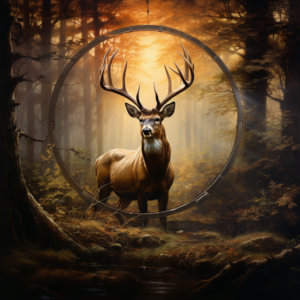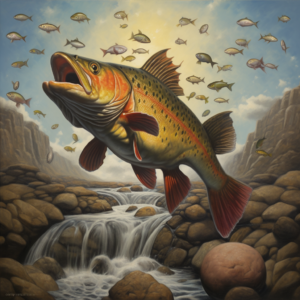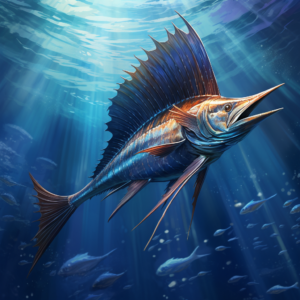If you love fishing, there’s no better way to spend a day than casting your line along the shoreline. Shoreline fishing is an excellent way to catch a wide variety of fish while enjoying the serenity of the water. However, to increase your fishing success rate, you need to have the right strategies and techniques in place. Shoreline fishing involves diverse conditions, and the right strategy can vary depending on the location and fish species you’re targeting. With that in mind, let’s dive into some of the strategies that can help you catch more fish while shoreline fishing.
One of the best things about shoreline fishing is the variety of locations available to you. Depending on where you’re fishing, the water’s depth, clarity, and current can vary significantly. The type of fish you’re targeting may also impact the strategy you use. For example, some fish species are more active at certain times of the day or prefer certain types of bait. By adapting your approach to the diverse conditions of shoreline fishing, you can increase your chances of success.
Over the following sections, we’ll explore essential fishing gear, mastering fishing techniques, exploring the best fishing spots, choosing the right lures, and adjusting your approach to weather and water conditions. By the end of this article, you’ll have a comprehensive understanding of the strategies and techniques that can help you achieve success when shoreline fishing.
So, grab your gear and get ready to catch some fish!
Essential Fishing Gear for Shoreline Fishing
When it comes to shoreline fishing, having the right gear can make all the difference in your fishing success. Here are some essential pieces of fishing gear you’ll want to have in your tackle box:
Fishing Rods
Choosing the right fishing rod for shoreline fishing is critical to your success. Look for a rod that is between 7 and 9 feet long, with a medium to heavy power rating. A longer rod will allow you to cast further out into the water, while a heavy power rating will give you the strength to reel in larger fish.
Fishing Reels
The best fishing reel for shoreline fishing depends on your personal preference and the type of fish you are targeting. Spinning reels are the most commonly used reels for shoreline fishing and are versatile enough to handle most fishing situations. Look for a reel with a high gear ratio for quick retrieval and a smooth drag system to tire out fish.
Fishing Tackle
Having the right fishing tackle can greatly increase your chances of catching fish. Be sure to have a variety of hooks, sinkers, and bobbers in your tackle box. Different types of fish and fishing conditions may require different types of tackle, so it’s important to be prepared with a range of options.
Fishing Lures
Fishing lures are a key element in attracting fish to your line. Choose lures that mimic the type of baitfish and insects found in the shoreline area where you’re fishing. Some popular types of lures for shoreline fishing include spoons, jigs, and soft plastic baits.
Fishing Line
When it comes to fishing line for shoreline fishing, monofilament and braided lines are the most commonly used. Monofilament line is more forgiving and easier to handle, while braided line provides increased strength and sensitivity. Consider the type of fish you’re targeting and the fishing conditions when selecting the appropriate line.
With the right gear in your tackle box, you’ll be ready to tackle any shoreline fishing situation that comes your way.
Mastering Fishing Techniques for Shoreline Fishing
Shoreline fishing can be a great way to catch a variety of fish species, but it requires the right technique. Here are some fishing techniques and tips to help you have a successful shoreline fishing experience:
Casting Techniques
Casting is one of the most important techniques when fishing from the shoreline. To cast properly, stand facing the water with your feet shoulder-width apart. Hold your fishing rod with both hands and bring it back behind your head. Then, rapidly bring the rod forward and release the line as you point the rod towards your target. Practice casting in a variety of conditions to become comfortable with different techniques.
Retrieving Techniques
Retrieving is the process of reeling in the line with your fishing reel after a cast. The best technique depends on the type of lure and the speed at which you want to retrieve it. Try a steady retrieve to simulate a swimming motion or switch it up with a stop-and-go technique to mimic a wounded fish.
Setting the Hook
When a fish takes your bait or lure, it’s important to set the hook properly to ensure a successful catch. To set the hook, quickly lift your rod to pull the slack out of the line and drive the hook into the fish’s mouth. It’s important to set the hook quickly and firmly to avoid the fish from spitting out the bait.
Other Tips
Other shoreline fishing tips include being aware of your surroundings, using polarized sunglasses to see fish in the water, and taking advantage of high tide times when fish may be closer to the shoreline. Remember, the more time you spend fishing, the more experience you will gain, and the better your chances of success!
Exploring the Best Fishing Spots on the Shoreline
When it comes to shoreline fishing, finding the right spot is crucial for a successful fishing trip. The best fishing spots along the shoreline are often determined by various factors, such as the species of fish you’re targeting, the time of day, and the weather conditions.
One of the most popular spots for shoreline fishing is around rocks, jetties, and other structures. These areas are often home to a variety of fish species, including snook, redfish, and tarpon. When fishing around structures, keep in mind that fish tend to hide in the shadows, so it’s essential to cast your line towards the shady areas.
Another great place to fish on the shoreline is around grass beds and flats. These areas are often abundant in baitfish, which attract larger predator fish species such as trout and redfish. When fishing in these areas, it’s essential to keep an eye out for signs of activity, such as schools of baitfish or jumping fish.
Tidal pools and channels are also excellent spots for shoreline fishing. These areas often have a significant concentration of fish, particularly during the changing tides. When fishing in tidal pools, it’s essential to pay attention to the changes in water depth, which can impact the behavior of the fish.
“Remember, the best fishing spots along the shoreline are often hidden gems. Don’t be afraid to explore different areas and experiment with different techniques to find the perfect spot.”
In addition to these areas, it’s essential to consider other factors when choosing the best fishing spots, such as the time of day and the weather conditions. For example, early morning and late afternoon are often the best times for fishing on the shoreline. On the other hand, fishing during high winds or rough surf conditions can be challenging.
Conclusion:
As you can see, the best fishing spots along the shoreline can vary based on several factors. By exploring different areas and experimenting with different techniques, you’re sure to find the perfect spot for your next fishing trip. So, grab your gear and head out to the shoreline to discover the hidden fishing gems waiting for you.
Choosing the Right Fishing Lures for Shoreline Fishing
When it comes to shoreline fishing, selecting the right fishing lure is crucial for attracting fish and increasing your chances of a catch. But with so many options available, it can be overwhelming to know where to start. Here are some tips for choosing the right fishing lure for your next shoreline fishing trip.
Consider the Fish Species
Before selecting a fishing lure, it’s important to consider the type of fish you’re targeting. Different fish species are attracted to different types of lures, so it’s helpful to do some research beforehand. For example, if you’re fishing for bass, consider using a spinnerbait or a crankbait. If you’re targeting trout, try using a worm or a small jig.
Match the Water Conditions
The water conditions can also have an impact on the type of lure you should use. If the water is murky, a brightly colored lure or one with a lot of movement can attract fish. In clear water, a more natural-looking lure may be more effective. It’s also important to consider the depth of the water and select a lure that can reach the desired depth.
Experiment with Different Lures
Don’t be afraid to try out different types of lures to see what works best for you. It’s common for different lures to be more successful at different times of the year or even throughout the day. Keep a variety of lures on hand and switch them out periodically to see what generates the most bites.
Pro Tip: If you’re not sure what type of lure to use, consider asking other fishermen or employees at your local bait and tackle shop for recommendations. They may have valuable insights based on their own experiences.
By taking the time to choose the right fishing lure, you can greatly increase your chances of success while shoreline fishing. Keep these tips in mind and don’t be afraid to experiment to find the lure that works best for you and the fish species you’re targeting.
Weather and Water Conditions: Factors Impacting Shoreline Fishing
Shoreline fishing is greatly affected by diverse conditions such as weather and water conditions. Therefore, it’s essential to know how these conditions can impact your fishing success rate.
Water Temperature
The temperature of the water can impact the feeding patterns of fish, hence their activity levels. So, on hot days, fish might move to deeper and cooler waters, while on cooler days, they might move to shallower waters to feed more actively.
Wind
Wind can affect the water currents, causing waves, and affecting the baitfish in the area. This, in turn, can affect the feeding patterns of larger predator fish. If you’re fishing in windy conditions, it’s recommended to cast your bait parallel to the shoreline.
Tides
Tides can and will play a significant role in your shoreline fishing success rate. Fish tend to feed more actively during tidal changes as the water moves and stirs up the bottom, attracting baitfish. Tidal changes can also impact water levels, causing changes in current speed and direction which can affect where and how you fish.
Water Clarity
Water clarity can impact the visibility of your bait. If the water is murky or unclear, it’s recommended to use fishing lures with high visibility. On the other hand, if the water is clear, using more natural color lures can be advantageous to not alert fish of your presence.
Remember, adaptable fishing techniques are the key to successful shoreline fishing. Always consider the diverse conditions and adjust your strategies accordingly.
Conclusion
Congratulations! You now have a solid understanding of strategies and techniques for successful shoreline fishing. By selecting the right gear, mastering fishing techniques, exploring the best fishing spots, choosing the right lures, and adapting to diverse weather and water conditions, you can significantly increase your fishing success rate.
Remember, the key to successful shoreline fishing is to be adaptable and flexible. Conditions can vary greatly from spot to spot, and even day to day, so it’s important to be prepared for anything. Be patient, stay alert, and don’t get discouraged if you don’t catch anything right away.
Keep practicing and experimenting with different techniques and strategies until you find what works best for you. And most importantly, enjoy the experience! Shoreline fishing is not just about catching fish, it’s about connecting with nature and enjoying the outdoors.
Happy Fishing!
FAQ
Q: What is shoreline fishing?
A: Shoreline fishing refers to the act of fishing from the shore or bank of a body of water, such as a river, lake, or ocean.
Q: What strategies can help increase fishing success rates in various shoreline conditions?
A: Some strategies for successful shoreline fishing include using different bait or lures depending on the fish species, adjusting casting distance and retrieval speed, and being aware of the optimal fishing times based on tide patterns and weather conditions.
Q: What are the essential fishing gear needed for shoreline fishing?
A: The essential fishing gear for shoreline fishing includes fishing rods, reels, fishing line, hooks, sinkers, and a tackle box to store your equipment. Additionally, it’s important to have appropriate clothing, sunscreen, and a fishing license.
Q: How do I select the right fishing gear for different fishing situations?
A: When selecting fishing gear for different fishing situations, consider factors such as the fish species you’re targeting, the size of the fish, the type of water you’ll be fishing in (saltwater or freshwater), and the casting distance required. Consulting with local fishing experts or visiting a reputable tackle shop can also help you make informed choices.
Q: What fishing techniques are effective for shoreline fishing?
A: Effective fishing techniques for shoreline fishing include casting and retrieving, bottom fishing, jigging, and using live bait or artificial lures. It’s important to match your fishing technique to the behavior of the fish species you’re targeting and adjust your approach based on the conditions of the shoreline.
Q: How do I find the best fishing spots along the shoreline?
A: When looking for the best fishing spots along the shoreline, consider factors such as structure (rocks, reefs, vegetation), depth, current flow, and the presence of baitfish. Local fishing guides, online forums, and talking to fellow anglers can also provide valuable insights on popular fishing spots in your area.
Q: What types of fishing lures are recommended for shoreline fishing?
A: Recommended fishing lures for shoreline fishing include topwater lures, crankbaits, soft plastics, jigs, and spoons. The choice of lure depends on the fish species you’re targeting and the conditions of the shoreline. Experimenting with different lures and observing fish behavior can help you determine what works best for you.
Q: How does weather and water conditions impact shoreline fishing?
A: Weather and water conditions such as temperature, wind, tides, and water clarity can greatly impact shoreline fishing. Fish tend to be more active during certain weather patterns, and water conditions can affect their feeding patterns. Adapting your fishing techniques based on these factors can significantly increase your chances of success.




